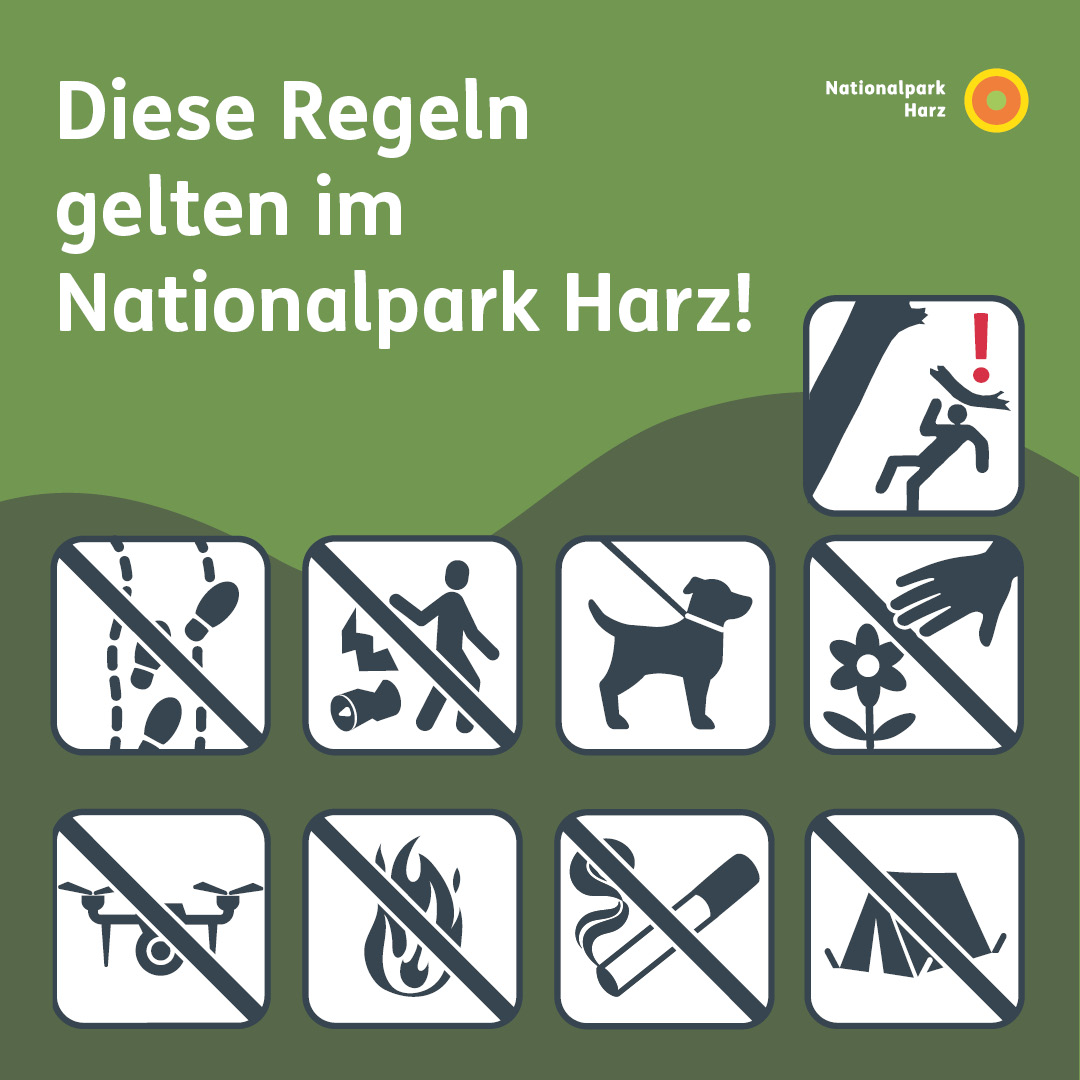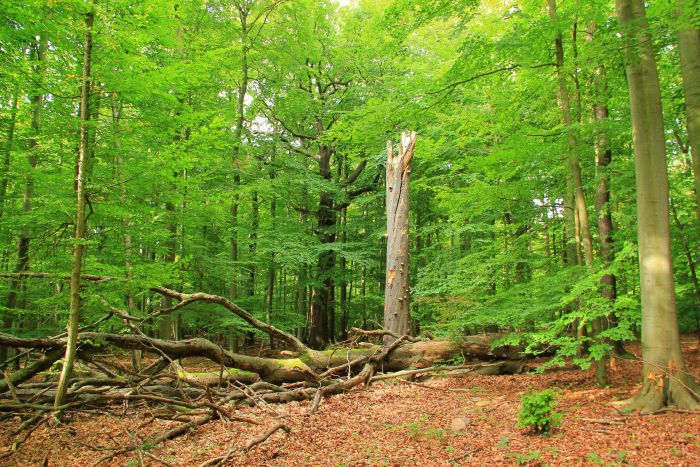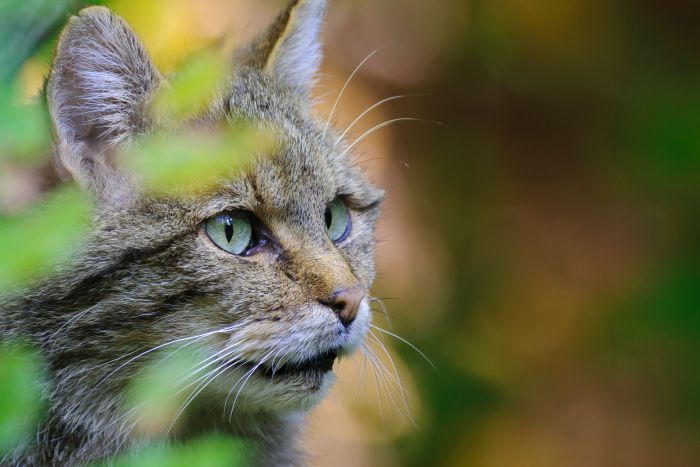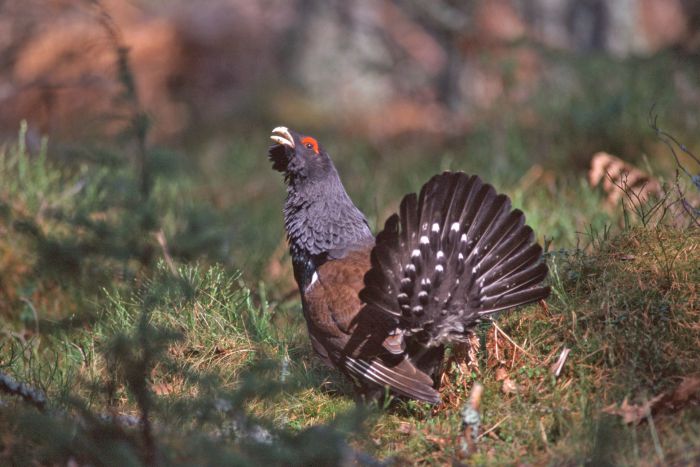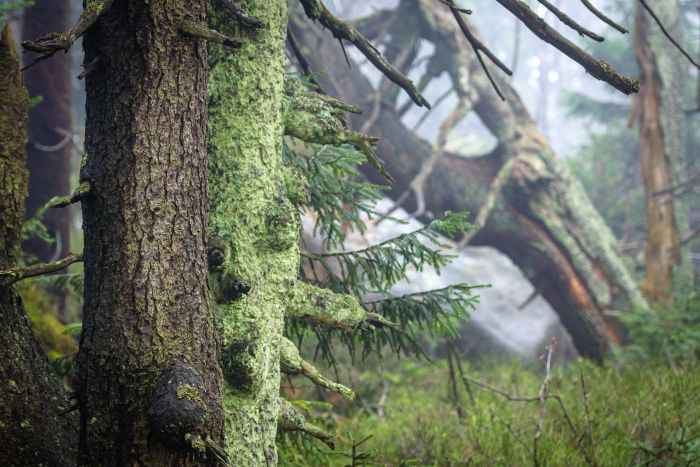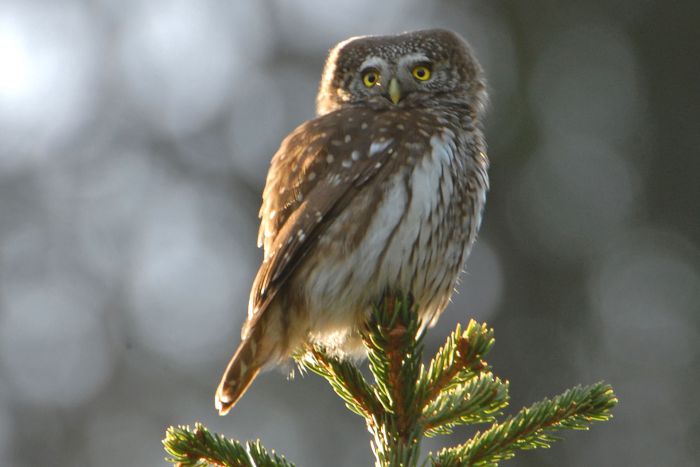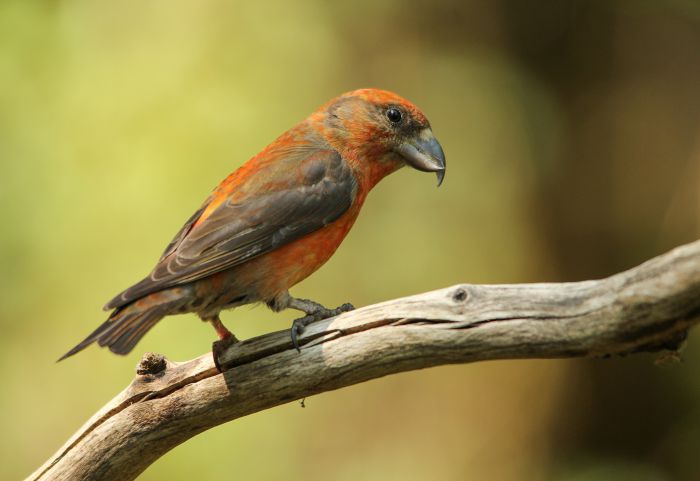The forests of the National Park
During a hiking trip in the Park, you will encounter many different forest types
Beech Forest
Our hiking trip starts in a beech forest in the lower regions of the Harz. During springtime it is always flooded with light and the ground is covered with early flowering plants, such as ramsons (Allium ursinum). In the summertime, the canopy is tighter and only a little light can reach the ground, which is still enough for some grasses and dwarf shrubs. Black woodpecker (Dryocopus martius) and black stork (Ciconia nigra) live in the beech forests of the National Park and even wildcat (Felis silvestris) can be found there.
Ravine Forest
A slope leads you down into the forest lying in a gorge. This area is too moist for beech, but ash and acer cast a shadow over a thick species-rich herb layer with their leaves. Both alpine blue-sow-thistle (Cicerbita alpina) and perennial honesty (Lunaria rediviva) dwell here. Lush ferns can be found on the sideward slopes. If you listen carefully, you can hear a variety of birds singing tenderly. On the ground, a grass snake (Natrix natrix) slithers past.
Mixed forest with beech and spruce
Climbing up to about 750 m, it gets brighter and colder. Here you will find a mixed forest, where mountain spruce and sycamore compete against beech. This area was also the realm of capercaillie (Tetrao urogallus), which could no longer be detected in recent years. In return you can see two big eyes peeking out of an old woodpecker cavity: it is the rare boreal owl (Aegolius funereus).
Spruce forest
The slender mixed forest area is followed by a rough forest wilderness. Here, at a height of 800 – 1000 m, the mountain spruce reigns. Only some mountain ash (rowan), birch and some willows are able to dwell here as well. On the ground you will find a variety of grasses and mosses. Tree bark and boulders are covered with lichens. Many mushrooms can be found too. A rare tree dwells in the lighter areas: it is the Carpathian birch. You can hear red crossbill (Loxia curvirostra) sing, with crested tit (Lophophanes cristatus), spotted nutcracker (Nucifraga caryocatactes) and Eurasian siskin (Carduelis spinus) joining in. With some luck you can even get a glance of the rare pygmy owl (Glaucidium passerinum). While you continue your way up, the wood density decreases and you can see the first gnarled trees trying to withstand the wind, which is getting stronger and stronger.


